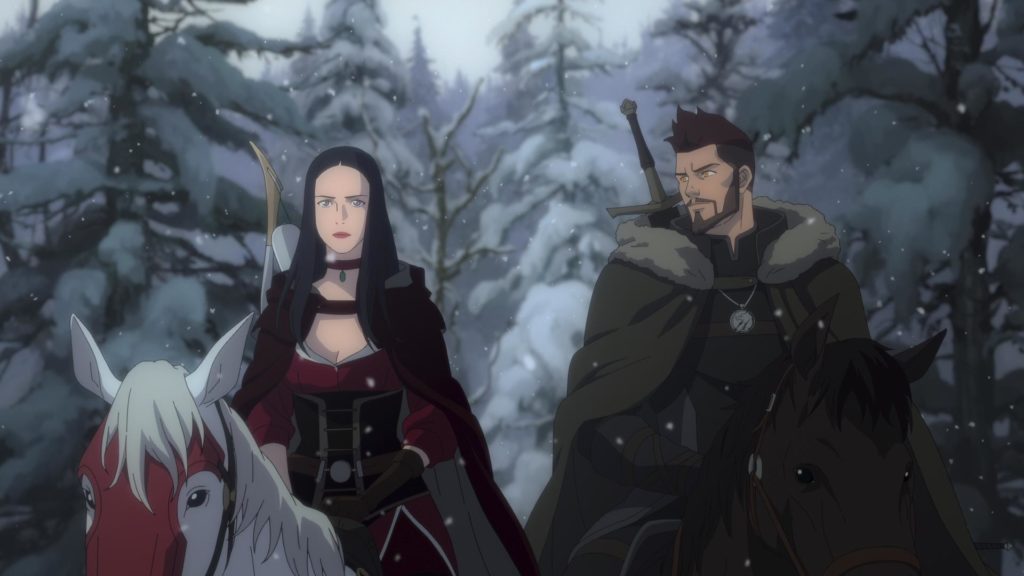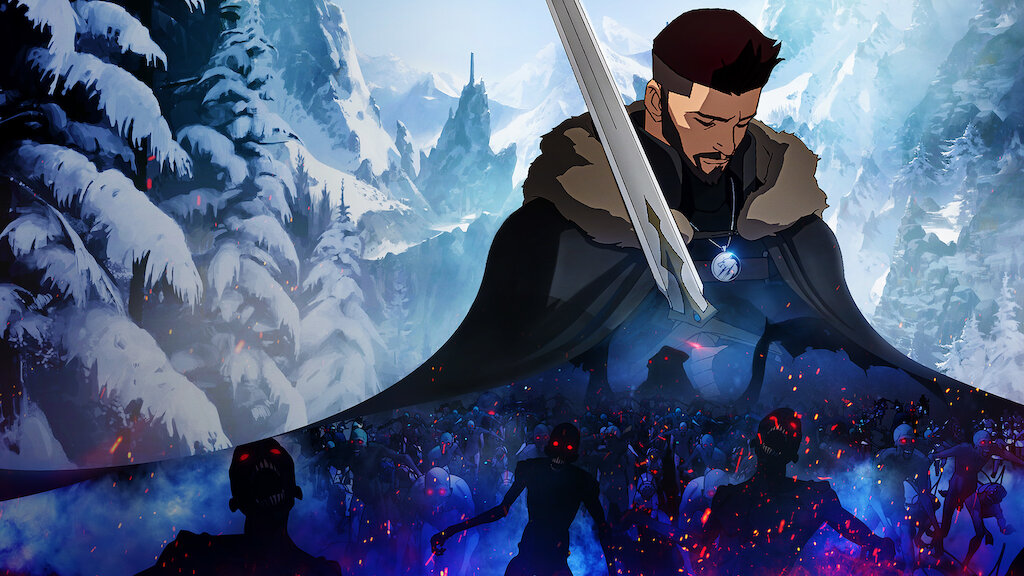The Witcher: Nightmare of the Wolf doesn’t exactly work as an entry point for newcomers to the franchise. However, if you’re already a fan, the anime film answers some important questions about the series lore. Animated by Studio Mir and directed by Kwang-Il Han, it manages to tell a story that balances the protagonist’s character development with the more important events that will shape the world for centuries to come.
Vesemir (Theo James) is a dashing, cavalier witcher who is investigating a series of monster murders near Kaer Morhen, the castle that houses the witchers of the wolf school. We see glimpses of his past, as he abandons a life as a servant (and also his love, Ilyana) to pursue the possibility of glory and adventure with the witchers. As he goes through horrific trials, however, he loses many of his friends. In the present, Vesemir teams up with the vehemently anti-witcher mage, Tetra Gilcrest (Lara Pulver) to investigate the monster activity. They discover something that shakes Vesemir to the core.
Studio Mir did a great job with the animation, which allows for storytelling and action flourishes that are impractical in live action. We see Vesemir maneuver through the air effortlessly, performing rolls and somersaults that would put the Geralt of The Witcher 3 to shame. Some of the action set pieces are suitably epic without going too overboard. Sometimes, the story makes a trite choice such as Vesemir being trapped in an illusion, but thankfully it does lead to an unexpected result.

Vesemir is a very different character than Geralt, and it is interesting to see the Continent explored through this new lens. It’s an interesting choice, to uncouple the world from Geralt, who has always been an integral part of these stories, and approach it from another angle. Writer Beau DeMayo, who also wrote for The Witcher season one, plays with expectations of time and surprises the viewers (and Vesemir) with the appearance of a character who is revealed to be an old friend from his past.
The Witcher: Nightmare of the Wolf fleshes out the world, going into more detail about elements such as how the humans rose against elves and used monsters to defeat them, and then how witchers themselves were created to deal with these monsters. This world is bleak, where the baser nature of humans seems to get better of them more often than not. Still, there are patches of hope that characters cling onto throughout their suffering.
The main conflict at the heart of the film is built up in a way that reminded me of the central conflict in Dragon Age 2. Of course, in this case, the vengeful Tetra is more responsible for instigating the assault against witchers. Almost none of the characters are truly good or evil, except for one, who is, unfortunately, one of the many casualties in the final conflict.
The Witcher: Nightmare of the Wolf probably won’t set the world on fire, but it’s an enjoyable story that expands the lore of the franchise and introduces an important character in an effective way. If you are a fan of the franchise, hopefully this will help you tide over until the release of the second season in December.






















